Wendong Yang
Energy Efficient Design in IRS-Assisted UAV Data Collection System under Malicious Jamming
Aug 31, 2022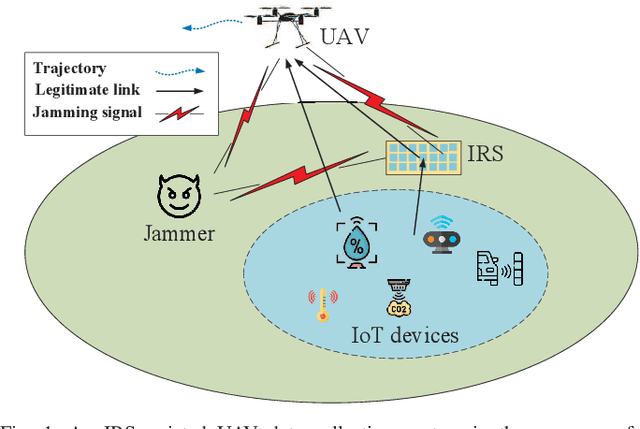
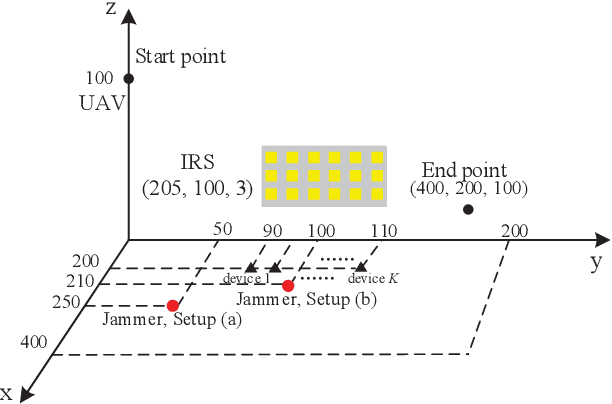
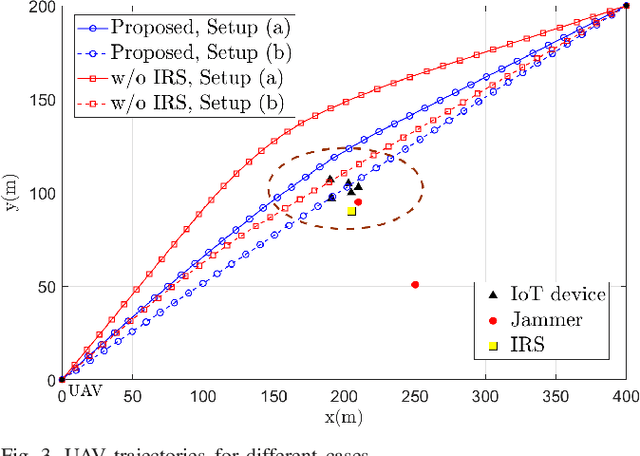

Abstract:In this paper, we study an unmanned aerial vehicle (UAV) enabled data collection system, where an intelligent reflecting surface (IRS) is deployed to assist in the communication from a cluster of Internet-of-Things (IoT) devices to a UAV in the presence of a jammer. We aim to improve the energy efficiency (EE) via the joint design of UAV trajectory, IRS passive beamforming, device power allocation, and communication scheduling. However, the formulated non-linear fractional programming problem is challenging to solve due to its non-convexity and coupled variables. To overcome the difficulty, we propose an alternating optimization based algorithm to solve it sub-optimally by leveraging Dinkelbach's algorithm, successive convex approximation (SCA) technique, and block coordinate descent (BCD) method. Extensive simulation results show that the proposed design can significantly improve the anti-jamming performance. In particular, for the remote jammer case, the proposed design can largely shorten the flight path and thus decrease the energy consumption via the signal enhancement; while for the local jammer case, which is deemed highly challenging in conventional systems without IRS since the retreating away strategy becomes ineffective, our proposed design even achieves a higher performance gain owing to the efficient jamming signal mitigation.
Robust Trajectory and Communication Design in IRS-Assisted UAV Communication under Malicious Jamming
Jan 24, 2022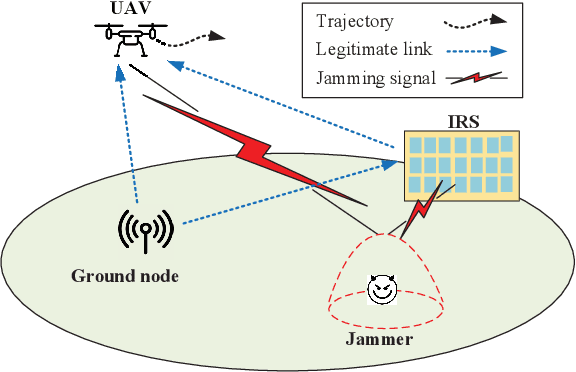

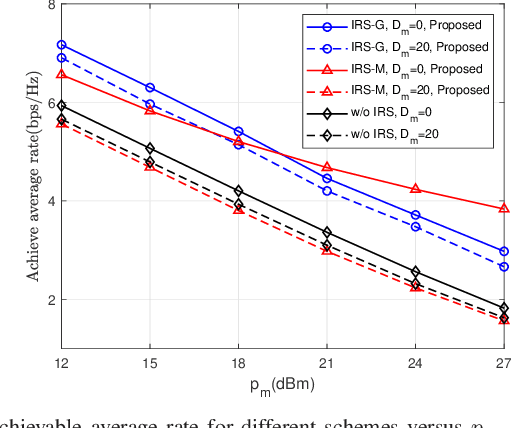
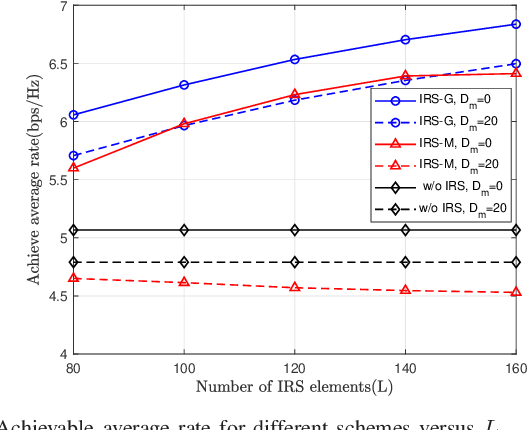
Abstract:In this paper, we study an unmanned aerial vehicle (UAV) communication system, where a ground node (GN) communicate with a UAV assisted by intelligent reflecting surface (IRS) in the presence of a jammer with imperfect location information. We aim to improve the achievable average rate via the joint robust design of UAV trajectory, IRS passive beamforming and GN's power allocation. However, the formulated optimization problem is challenging to solve due to its non-convexity and coupled variables. To overcome the difficulty, we propose an alternating optimization (AO) based algorithm to solve it sub-optimally by leveraging semidefinite relaxation (SDR), successive convex approximation (SCA), and S-procedure methods. Simulation results show that by deploying the IRS near the GN, our proposed algorithm always improves the uplink achievable average rate significantly compared with the benchmark algorithms, while deploying the IRS nearby the jammer is effective only when the jammer's location is perfectly known.
Trajectory and Transmit Power Optimization for IRS-Assisted UAV Communication under Malicious Jamming
Jan 14, 2022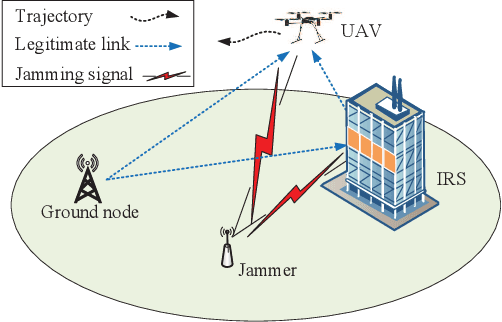

Abstract:In this letter, we investigate an unmanned aerial vehicle (UAV) communication system, where an intelligent reflecting surface (IRS) is deployed to assist in the transmission from a ground node (GN) to the UAV in the presence of a jammer. We aim to maximize the average rate of the UAV communication by jointly optimizing the GN's transmit power, the IRS's passive beamforming and the UAV's trajectory. However, the formulated problem is difficult to solve due to the non-convex objective function and the coupled optimization variables. Thus, to tackle it, we propose an alternating optimization (AO) based algorithm by exploiting the successive convex approximation (SCA) and semidefinite relaxation (SDR) techniques. Simulation results show that the proposed algorithm can significantly improve the average rate compared with the benchmark algorithms. Moreover, it also shows that when the jamming power is large and the number of IRS elements is relatively small, deploying the IRS near the jammer outperforms deploying it near the GN, and vice versa.
A novel hybrid model based on multi-objective Harris hawks optimization algorithm for daily PM2.5 and PM10 forecasting
May 30, 2019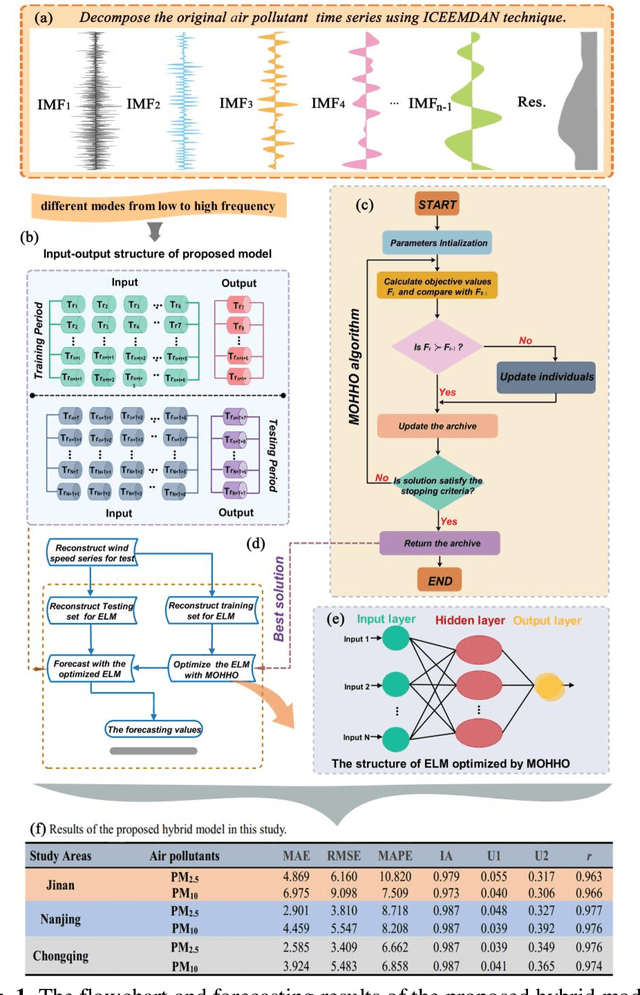
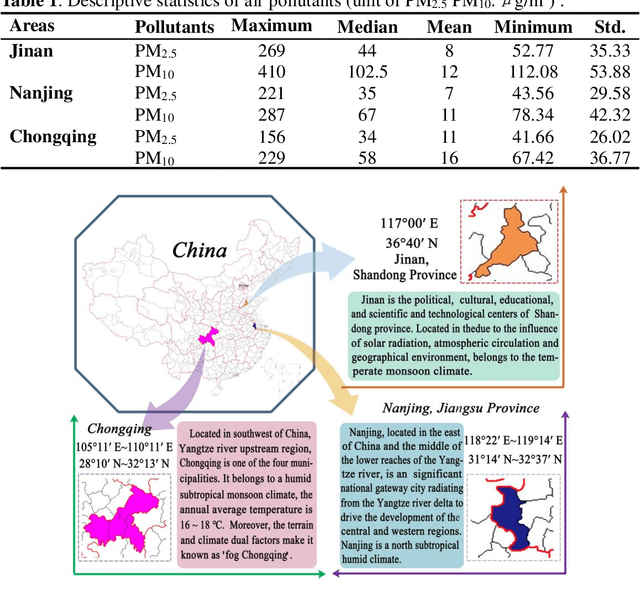
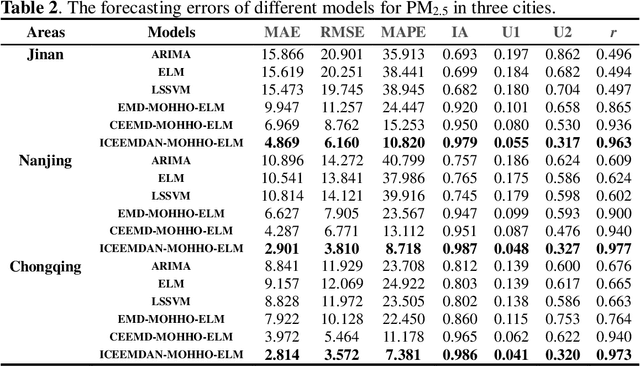
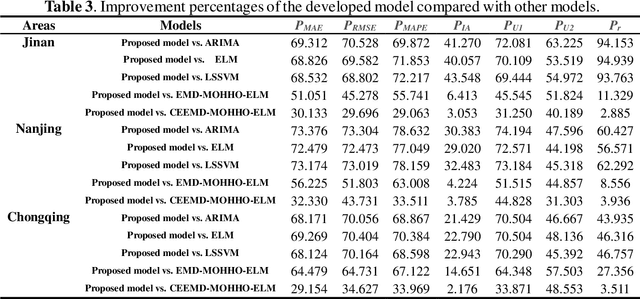
Abstract:High levels of air pollution may seriously affect people's living environment and even endanger their lives. In order to reduce air pollution concentrations, and warn the public before the occurrence of hazardous air pollutants, it is urgent to design an accurate and reliable air pollutant forecasting model. However, most previous research have many deficiencies, such as ignoring the importance of predictive stability, and poor initial parameters and so on, which have significantly effect on the performance of air pollution prediction. Therefore, to address these issues, a novel hybrid model is proposed in this study. Specifically, a powerful data preprocessing techniques is applied to decompose the original time series into different modes from low- frequency to high- frequency. Next, a new multi-objective algorithm called MOHHO is first developed in this study, which are introduced to tune the parameters of ELM model with high forecasting accuracy and stability for air pollution series prediction, simultaneously. And the optimized ELM model is used to perform the time series prediction. Finally, a scientific and robust evaluation system including several error criteria, benchmark models, and several experiments using six air pollutant concentrations time series from three cities in China is designed to perform a compressive assessment for the presented hybrid forecasting model. Experimental results indicate that the proposed hybrid model can guarantee a more stable and higher predictive performance compared to others, whose superior prediction ability may help to develop effective plans for air pollutant emissions and prevent health problems caused by air pollution.
 Add to Chrome
Add to Chrome Add to Firefox
Add to Firefox Add to Edge
Add to Edge